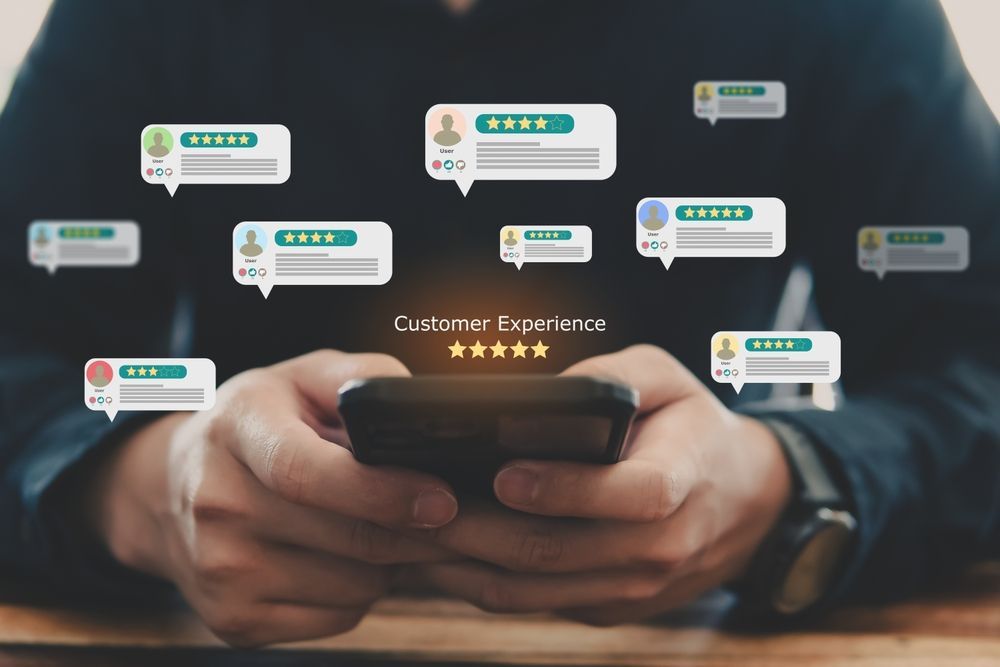Beyond the Buzzwords: Fun & Foundational Marketing Theories Every Business Needs to Know
Marketing goes deeper than catchy slogans and eye-catching visuals. At its heart, it’s about understanding people. Why do they buy? What motivates them? And what drives their decisions? By unpacking these core behaviors, we can craft strategies that truly connect. This article isn’t about fleeting trends; instead, it focuses on timeless marketing concepts that every business can use to build brand loyalty and drive growth.
We’ll explore key marketing theories, real-world examples of brands mastering these strategies, and actionable steps to bring these ideas into your own marketing campaigns.
1. The "Just Add an Egg" Effect (Effort Justification)

Theory: Originating from a fascinating anecdote about Betty Crocker cake mixes in the 1950s, this theory highlights our innate need to feel a sense of accomplishment. Initially, cake mixes required only water, but sales struggled. Why? Housewives felt guilty; it was too easy, making them feel less like they were "baking" and more like they were just opening a box. When Betty Crocker removed the powdered egg and required consumers to add a fresh one, sales soared. The slight added effort made them feel like they were genuinely contributing, increasing their perceived value of the end product.
In Practice: When consumers invest a little effort, they feel a sense of ownership and pride. This boosts their perception of the product's value and their own competence.
Digital Marketing Application:
- Customization: Allowing users to personalize products (e.g., custom sneakers, build-your-own computers).
- Co-creation: Inviting customers to submit ideas or vote on features.
- Interactive Content: Quizzes, configurators, or tools where users input data to get a personalized result.
Company Example: Kraft Heinz's Just Crack an Egg
- Strategy: Kraft Heinz launched "Just Crack an Egg" omelet and scramble kits. Instead of a fully prepared microwavable meal, these kits contain pre-cooked ingredients (meat, cheese, veggies) and require the consumer to add a fresh egg, crack it into the cup, and microwave.
- Result: The product line has been highly successful, tapping into the desire for a quick, convenient breakfast that still feels "homemade" because of the added fresh egg, giving consumers a sense of minimal effort while maximizing the feeling of accomplishment.
Try This: Could you introduce a small step where your customer contributes effort? Even a simple "build-your-own" element for a product could create that sense of achievement.
Ask Yourself: How can you engage your customers, so they feel actively involved in the process rather than just passive buyers?
2. Create a Villain (Narrative Marketing)

The Theory: All good storytelling needs conflict. In marketing, this means identifying a "villain" – a problem, an outdated solution, a societal norm, or even a competitor – that your brand helps the customer overcome. Your brand then becomes the "hero" or, more accurately, the "guide" that empowers the customer (the true hero) to defeat this antagonist.
In Practice: This approach creates an emotional connection, clarifies your brand's mission, and makes your offering feel like a necessary solution to a relatable struggle.
Digital Marketing Application:
- Content Marketing: Blog posts and videos that expose the flaws of traditional methods or common pain points.
- Advertising: Campaigns that explicitly contrast your solution with the "villain" (e.g., "Tired of X? We offer Y!").
- Brand Storytelling: Weaving a narrative around how your company was founded to solve a specific problem or challenge.
Company Example: Dollar Shave Club
- Strategy: Dollar Shave Club famously created a villain out of the overpriced, over-engineered, and inconvenient traditional razor model dominated by giants like Gillette. Their viral video directly attacked the absurdity of complex razors and subscription models.
- Result: This narrative resonated deeply with consumers who felt exploited by existing options, leading to massive subscriber growth and ultimately their acquisition by Unilever for a reported $1 billion, proving the power of a compelling "villain."
Try This: Identify the "villain" in your industry or your customer’s life. Use customer testimonials and pain points to tailor your messaging.
Ask Yourself: What frustrations do your customers face? How can you position yourself as the clear solution? Who has been Taylor Swift’s Villain?
3. The IKEA Effect (Labor Love)

The Theory: Coined by Harvard Business School professor Michael Norton and his colleagues, the IKEA Effect states that consumers place a disproportionately higher value on products they have partially created or assembled themselves. The sheer effort (and occasional frustration!) of putting together that flat-pack furniture translates into a stronger emotional attachment and perceived worth.
In Practice: This is closely related to "Just Add an Egg," emphasizing that effort leads to affection. We love what we build.
Digital Marketing Application:
- User-Generated Content (UGC): Encourage customers to create and share content related to your brand.
- DIY Kits: Offer product kits that require some assembly or creative input from the user.
- Interactive Tools: Software or platforms where users design, configure, or build their own solutions.
Company Example: Nike’s "Nike By You"
- Strategy: Nike’s "Nike By You" initiative allows customers to design their own shoes online. By choosing colors, materials, and styles, customers create a pair of sneakers they're uniquely connected to.
- Result: This taps into the IKEA Effect, making customers more invested in their purchase and willing to pay a premium for a personalized item. It fosters deeper brand loyalty and satisfaction.
Try This: Introduce a feature where customers can contribute to the final product, whether through design, functionality, or packaging.
Ask Yourself: How can you make your customers feel like creators, not just consumers?
4. Customer Journey Mapping (The Hero’s Path)

The Theory: This isn't just a diagram; it's a strategic framework for visualizing the entire sequence of interactions a customer has with your brand, from initial awareness to post-purchase advocacy. It covers all touchpoints, online and offline, highlighting their thoughts, feelings, and actions at each stage.
In Practice: Understanding the customer journey allows you to identify pain points, optimize messaging, and maintain a consistent and easy experience. It helps you see your business from the customer's perspective.
Digital Marketing Application:
- Content Strategy: Creating targeted content for each stage (e.g., awareness, consideration, decision, loyalty).
- Email Automation: Designing personalized email sequences that guide customers through their journey.
- Website Optimization: Implementing intuitive navigation and clear calls-to-action at critical junctures.
Company Example: Amazon
- Strategy: Amazon excels at customer journey mapping. From tailored product recommendations to one-click purchases and proactive delivery updates, every touchpoint provides an easier experience. They continuously analyze data to predict needs and reduce friction.
- Result: Amazon's meticulous optimization of the customer journey has resulted in industry-leading conversion rates, high customer satisfaction, and immense repeat business, solidifying its e-commerce dominance.
Try This: Walk in your customer’s shoes. Identify gaps or causes of confusion, then build out content, email sequences, or tooltips to make things easier.
Ask Yourself: Are you giving your customers a clear and enjoyable path from curiosity to commitment?
5. The AARRR Funnel (Pirate Metrics)
The Theory: Developed by venture capitalist Dave McClure, this framework provides a simple yet powerful way to measure and optimize growth. The acronym stands for:
- Acquisition: How users find you.
- Activation: Do users have a great first experience?
- Retention: Do users come back?
- Referral: Do users tell others?
- Revenue: How do you make money from users?
In Practice: It shifts focus beyond just getting new customers to understanding the entire customer lifecycle, emphasizing long-term value and identifying bottlenecks in the growth process.
Digital Marketing Application:
- Analytics Dashboard: Tracking metrics for each stage to identify areas for improvement.
- Campaign Optimization: Tailoring campaigns to specific funnel stages (e.g., SEO for acquisition, email nurture for retention).
- Growth Hacking: Experimenting with tactics to improve conversion at each stage.
Company Example: Dropbox
- Strategy: Dropbox built early success by nailing the referral stage of the AARRR funnel. They offered free additional storage (up to 32GB) to users who invited friends to sign up, turning each satisfied customer into a powerful promoter.
- Result: This referral incentive led to viral growth, significantly lowering their customer acquisition cost and propelling them to millions of users in a short period, demonstrating the immense power of incentivized referrals.
Try This: Audit your funnel and prioritize one stage for optimization, starting where the largest drop-off happens.
Ask Yourself: Are you focused on driving long-term growth, or are you only chasing acquisition?
6. The 7 Ps of Marketing Mix (Digital Expansion)
The Theory: Building on the traditional 4 Ps (Product, Price, Place, Promotion), the digital age necessitates an expansion to 7 Ps:
- Product: What are you selling? (Including digital products, services, platforms)
- Price: How is it priced? (Dynamic pricing, subscription models)
- Place: Where is it distributed? (Online marketplaces, e-commerce, apps)
- Promotion: How do you communicate its value? (SEO, PPC management, social, content, email)
- People: Who is involved? (Customers, employees, influencers, community)
- Process: How is the service delivered? (Online onboarding, automated workflows, customer service)
- Physical Evidence: What tangible/visual elements are there? (Website design, UI/UX, branding, digital receipts, reviews)
In Practice: This comprehensive framework helps marketers analyze and digital strategy, making sure all elements are aligned for a cohesive customer experience.
Digital Marketing Application:
- Website Design: Optimizing "Physical Evidence" through intuitive UI and compelling visuals.
- CRM & Automation: Streamlining "Processes" for efficiency and personalization.
- Community Management: Engaging "People" to build brand advocates.
Company Example: Apple
- Strategy: Apple excels at integrating all 7 Ps digitally. Their Product is an ecosystem (hardware, software, services). Their Price strategy combines premium positioning with ecosystem lock-in. Place is online (Apple.com, App Store). Promotion is iconic and consistent across all channels. People involve their passionate community, expert customer service, and influential leadership. The process is flawless, from online ordering to iCloud syncing. Physical Evidence is seen in their minimalist website design, intuitive UI/UX, and consistent branding.
- Result: Apple's holistic approach to the 7 Ps has created one of the world's most valuable and beloved brands, driving immense customer loyalty and high average customer lifetime value.
Try This: Beyond just advertising, consider how each of the 7 Ps contributes to your customer's overall digital experience and brand perception.
Ask Yourself: Are all elements of your digital marketing mix working in harmony to support your brand's goals?
7. Social Proof (The Wisdom of Crowds)

The Theory: Based on the principle that people are more likely to trust and adopt a product or behavior if they see others doing it, especially if those others are similar to them, experts, or a large group.
In Practice: In the digital realm, social proof is paramount for building credibility and influencing purchase decisions.
Digital Marketing Application:
- Customer Reviews & Testimonials: Prominently displaying positive feedback.
- User-Generated Content (UGC): Sharing photos or videos from satisfied customers.
- Influencer Marketing: Partnering with credible individuals to endorse your brand.
- "As Seen On" Logos: Featuring media mentions or awards.
Company Example: Amazon
- Strategy: Amazon is a master of social proof. Every product page heavily features customer reviews, star ratings, and "Customers also bought..." sections. They also highlight "Best Seller" or "Amazon's Choice" badges.
- Result: This extensive use of social proof directly influences purchasing decisions, reduces perceived risk, and contributes significantly to Amazon's dominance in e-commerce. Customers trust the collective wisdom of other buyers.
Try This: Use your social media to repost UGC and reviews. When others see relatable endorsements, they’re more likely to trust your brand.
Ask Yourself: Does your marketing spotlight who loves your product, and are you amplifying satisfied voices?
8. Scarcity & Urgency (Fear of Missing Out - FOMO)
The Theory: Limiting the availability of a product (scarcity) or setting a deadline for an offer (urgency) significantly increases its perceived value and drives immediate action by tapping into the fear of missing out.
In Practice: These are powerful conversion boosters when used authentically and ethically.
Digital Marketing Application:
- Limited-Time Offers: "Sale ends in 24 hours!"
- Limited Stock Notifications: "Only 3 left!"
- Early Bird Pricing: Discounts for quick decision-makers.
- Exclusive Access: Offering special deals for certain customer tiers.
Company Example: Ticketmaster / Booking.com
- Strategy: Ticketmaster uses countdowns for high-demand events, creating urgency by showing how quickly tickets are selling and how much time buyers have to decide. Booking.com similarly uses messages like "Only 1 room left at this price!"
- Result: These real-time notifications and timers create a strong sense of FOMO, nudging users to book quickly before a desirable option is gone, contributing to high conversion rates for both platforms.
Try This: Experiment with a seasonal or limited-run campaign, keeping the scarcity component feels authentic and aligned with your brand.
Ask Yourself: Are you creating a compelling reason to act now, or are customers left procrastinating?
9. Reciprocity (Give to Get)

The Theory: Humans feel an inherent obligation to give back when they receive something. In marketing, this translates to providing genuine value upfront, making potential customers more likely to reciprocate with their attention, engagement, or ultimately, their business.
In Practice: This is the bedrock of effective content marketing and lead nurturing, building trust and goodwill before making a sales pitch.
Digital Marketing Application:
- Free Content: E-books, webinars, templates, helpful blog posts.
- Freemium Models: Offering a basic version of a product for free.
- Free Tools/Calculators: Providing value without requiring a purchase.
- Personalized Consultations: Offering initial advice at no charge.
Company Example: HubSpot
- Strategy: HubSpot is a prime example of a company built on reciprocity. They offer an extensive array of free tools (CRM, email marketing, website grader, lead magnet templates) and a vast library of free educational content (blog posts, guides, certifications).
- Result: By providing immense value upfront, HubSpot builds trust, establishes authority, and generates a massive pool of qualified leads who are already familiar with their ecosystem, making conversion to their paid software much smoother and highly successful.
Try This: What free resources or valuable content can you offer to your audience without expecting an immediate sale?
Ask Yourself: How can you consistently provide value to build a relationship before asking for a conversion?
10. The Endowment Effect (Ownership Value)
The Theory: Once we feel like something belongs to us, we’re more attached to its value. Free trials and customization tap into this principle by creating a sense of ownership before a purchase.
In Practice: This is why trials, demos, and free samples are so powerful – they create a sense of temporary ownership, making the potential customer more reluctant to give the product up.
Digital Marketing Application:
- Free Trials: Offering full access to software or a service for a limited time.
- Product Demos: Allowing users to interact with a product virtually.
- Customization Tools: As users invest time in designing something, they feel more ownership.
Company Example: Spotify Premium Trials
- Strategy: Spotify offers free 30-day (or longer) trials of their premium subscription. During that time, users experience ad-free listening, create personalized playlists, download music, and engage with exclusive features, essentially "owning" the premium experience.
- Result: This period of "ownership" creates a strong endowment effect, making it difficult for users to revert to the free, ad-supported plan. This strategy significantly boosts premium subscription conversions and long-term retention.
Try This: Introduce a free trial period for your product or service and monitor the conversion rate when customers feel the full benefit.
Ask Yourself: Could you simulate ownership (trials, customizations) to get customers emotionally invested before they buy?
11. Authority (E-E-A-T for SEO)
The Theory: People tend to defer to experts or those in positions of authority. In digital marketing, especially for SEO, Google's E-E-A-T guidelines (Experience, Expertise, Authoritativeness, Trustworthiness) emphasize the importance of demonstrating your credibility, and use specific keywords to trigger more traffic to your company.
In Practice: To rank high in search results and build trust with your audience, your content and brand need to be demonstrably created by experts, backed by experience, and seen as highly trustworthy.
Digital Marketing Application:
- Author Bios: Highlighting the credentials of content creators.
- Citations & Research: Backing claims with data from reputable sources.
- Awards & Certifications: Displaying badges of recognition.
- Thought Leadership Content: Publishing in-depth articles, whitepapers, or studies.
Company Example: Healthline / Mayo Clinic
- Strategy: For "Your Money, Your Life" (YMYL) topics like health, Google heavily prioritizes E-E-A-T. Websites like Healthline and Mayo Clinic consistently feature content written or medically reviewed by doctors, nurses, and other qualified health professionals. They cite credible sources, have content up-to-date, and have clear editorial policies.
- Result: These sites consistently rank at the top for health-related searches because Google trusts their authority and expertise, leading to high organic traffic and significant influence in the health information space.
Try This: How can you showcase the expertise of your team or your brand's experience in your content? Are you linking to reputable sources?
Ask Yourself: How can you improve your website's overall trustworthiness and perceived authority?
12. Personalization & Segmentation (Relevant Connections)

The Theory: Generic messaging falls flat. This theory emphasizes tailoring marketing messages, content, and offers to individual customers or specific audience segments based on their data, behavior, or preferences.
In Practice: Personalization leads to higher engagement rates, better conversion rates, and stronger customer loyalty by making the customer feel understood and valued.
Digital Marketing Application:
- Email Marketing: Segmenting lists and sending personalized subject lines and content.
- Website Content: Dynamic content that changes based on user behavior or demographics.
- Ad Retargeting: Showing highly relevant ads to users who have previously interacted with your site.
- Product Recommendations: Based on past purchases or Browse history.
Company Example: Netflix
- Strategy: Netflix is a master of personalization. They use algorithms to analyze viewing history, ratings, and even time of day to recommend highly relevant content (movies, shows, genres). Their user interface is dynamic, showing content tailored to individual tastes.
- Result: This hyper-personalization is a core reason for their high user retention and deep engagement. Users feel understood and continuously discover new content they love, strengthening their bond with the platform and reducing churn.
Try This: What data do you have about your customers that you can use for personalization? How can you segment your email list for more relevant campaigns?
Ask Yourself: Are your digital communications truly speaking to individual customer needs and interests?
13. The Baader-Meinhof Phenomenon (Frequency Illusion)
The Theory: This occurs when, after learning about or noticing something new, you suddenly seem to see it everywhere. It's not that it's appearing more frequently, but your brain is now primed to notice it.
In Practice: While you can't force this phenomenon, consistent, multi-channel branding across digital touchpoints can activate it, making your brand feel more pervasive and established.
Digital Marketing Application:
- Omnichannel Marketing: Maintain consistent branding and messaging across all platforms (website, social, email, ads).
- Retargeting Campaigns: Keeping your brand top-of-mind after initial interaction.
- Brand Awareness Campaigns: Repeated exposure to your logo and core message.
Company Example: Major Retail Brands (e.g., Target, Walmart)
- Strategy: Large retailers like Target and Walmart invest heavily in omnichannel branding. Their logos, brand colors, and consistent messaging appear across TV, digital display ads, social media, email, and in-store experiences.
- Result: This pervasive, consistent exposure leverages the Baader-Meinhof effect. Once a consumer thinks of shopping, or sees one ad, they subconsciously begin to notice that brand everywhere, reinforcing its status as a ubiquitous, familiar, and convenient option for their needs.
Try This: How can you increase your brand's 'perceived omnipresence across different digital touchpoints?
Ask Yourself: Are we consistently reinforcing our brand message so that once someone notices us, they start seeing us everywhere?
14. The Mere-Exposure Effect (Familiarity Breeds Liking)
The Theory: People tend to develop a preference for things simply because they are familiar with them. The more often you are exposed to something (a brand, a logo, a message), the more you like it, even if you don't consciously remember every exposure.
In Practice: This principle underpins the effectiveness of consistent branding and repeated, positive ad impressions in building comfort and trust over time.
Digital Marketing Application:
- Consistent Branding: Using the same colors, fonts, and tone across all digital assets.
- Display Advertising: Running campaigns for broad brand recognition.
- Content Frequency: Regularly publishing new, valuable content.
Company Example: Geico
- Strategy: Geico's advertising strategy is heavily reliant on consistent, repetitive exposure to memorable characters (the Gecko, the Caveman, etc.) and jingles ("15 minutes could save you 15% or more"). They invest heavily in broad, frequent ad placements across TV and digital channels.
- Result: While the ads are often humorous, their primary goal is to build overwhelming brand familiarity. This consistent, positive mere exposure has made Geico one of the most recognized and top-of-mind insurance providers, leading to a massive customer base.
Try This: Beyond direct response, how are you giving your brand consistent, positive exposure to your target audience?
Ask Yourself: Are you doing enough to build familiarity and trust with your audience over time, even before they're ready to buy?
15. The Information-Gap Theory (Curiosity Hooks)
The Theory: Curiosity arises from a "gap" between what we know and what we want to know. This cognitive discomfort motivates us to seek information to close that gap.
In Practice: This is the secret sauce behind compelling headlines, email subject lines, and social media hooks that drive clicks and engagement.
Digital Marketing Application:
- Compelling Headlines: Crafting titles that hint at a solution or reveal intriguing information without giving everything away immediately.
- Email Subject Lines: Posing questions or using intriguing phrases to encourage opens.
- Content Intros: Beginning with a hook that highlights a problem and promises a surprising solution.
Company Example: BuzzFeed / Upworthy
- Strategy: Early adopters and masters of the "curiosity gap" were content sites like BuzzFeed and Upworthy. Their headlines (e.g., "You Won't Believe What Happened When This Guy Tried to Live On Only Water For 30 Days" or "She Thought She Was Fat, But Then This Happened...") are designed to create an irresistible urge to click by hinting at a revelation without giving it away.
- Result: This strategy led to immense virality and astronomical click-through rates, demonstrating the power of the curiosity gap to drive immediate attention and audience engagement. (Note: Ethical use involves delivering on the promise, not just clickbait.)
Try This: How can you craft your headlines and content intros to create a compelling information gap that drives clicks and engagement?
Ask Yourself: What burning questions do your customers have that you can pique their curiosity about?
16. Gamification & Variable Rewards (Addictive Engagement)
The Theory: Gamification applies game-design elements (like points, badges, leaderboards) to non-game contexts. Coupled with the concept of Variable Rewards (where the reward is unpredictable), it creates highly engaging and even habit-forming experiences. Think slot machines or endlessly scrolling social media feeds.
In Practice: This makes customer interactions more fun, encourages repeat engagement, and can build strong loyalty.
Digital Marketing Application:
- Loyalty Programs: With surprise bonuses or tiered rewards.
- Interactive Quizzes & Polls: Offering unexpected insights or results.
- Progress Bars: Showing users how close they are to a goal (e.g., profile completion, reaching a discount).
- "Spin the Wheel" Promotions: For random discounts or prizes.
Company Example: Duolingo
- Strategy: The language learning app Duolingo is a prime example of successful gamification. It uses streaks, points, leaderboards, virtual currency (gems), and "lingots" (rewards) to motivate users. Learners get variable rewards in terms of new words, phrases, and progression.
- Result: Duolingo has billions of users and is one of the most effective language-learning platforms, largely due to its highly engaging gamified experience that keeps users coming back daily to maintain their streaks and "level up," driving exceptional retention.
Try This: How can you 'gamify' the customer experience on your website or in your app? Could a loyalty program with variable rewards increase repeat purchases or engagement?
Ask Yourself: What small, unexpected delights can you build into the customer journey?
17. The Decoy Effect (Asymmetric Dominance)
The Theory: This is a cognitive bias where consumers' preference for one option over another changes when a third, "decoy" option is presented. The decoy is usually clearly inferior to one option (the "target") but not necessarily to the other (the "competitor"), making the target option seem much more attractive.
In Practice: The Decoy Effect is powerful in pricing strategies, subtly steering customers toward a preferred, higher-value option.
Digital Marketing Application:
- Pricing Tiers: Introducing a third, less appealing option to make a middle or premium tier seem like a better deal.
- Product Feature Comparison: Structuring comparison tables so one option clearly outshines another when a third, strategically weaker option is present.
Company Example: The Economist Subscription Options
- Strategy: A famous example involves The Economist's subscription options presented by Dan Ariely:
- Web-only subscription: $59
- Print-only subscription: $125 (the decoy)
- Web and print subscription: $125 (the target) The "print-only" option, being the same price as "web and print" but with less value, made the "web and print" option appear incredibly attractive and a clear bargain.
- Result: In experiments, the decoy option significantly shifted preference towards the most expensive (and most profitable) combined subscription, demonstrating how irrational choices can be influenced by strategically placed decoys.
Try This: Review your product or service pricing. Are there opportunities to strategically add a "decoy" option that nudges customers towards a specific tier?
Ask Yourself: How can you structure your offerings to highlight the best value for your customers and your business?
Test Your Marketing Theory Knowledge!
Ready to see how well you've absorbed these powerful marketing concepts? Take our quick quiz below! Match the scenario to the marketing theory it best represents.
Quiz Questions:
1. A new app offers a free version with core features, but users must manually set up their profile preferences and connect social media accounts before they can unlock advanced functionalities. This makes them feel more invested in the app. What marketing theory is being applied?
A) Scarcity & Urgency
B) The "Just Add an Egg" Effect
C) The Mere-Exposure Effect
D) Social Proof
Show Answer →
B) The "Just Add an Egg" Effect
Explanation: By requiring users to invest a small amount of effort in setting up their profiles, the app makes them feel more involved and committed, similar to how adding an egg makes baking more satisfying.
2. A political figure frequently uses the term "Fake News" to describe critical media outlets, portraying them as dishonest and untrustworthy. This narrative positions the politician as a defender of truth against a deceptive force. Which marketing theory is at play?
A) The Endowment Effect
B) The Decoy Effect
C) Create a Villain
D) Reciprocity
Show Answer →
C) Create a Villain
Explanation: Donald Trump characterized "Fake News" as an antagonist, a negative force opposing his message. This narrative positioned him (or his campaign) as the champion fighting against this defined "villain."
3. An online course platform encourages users to upload their completed assignments and projects to a public gallery for peer review and feedback. This fosters a sense of accomplishment and pride in their work. Which marketing theory is primarily at work here?
A) The IKEA Effect
B) Authority
C) Information-Gap Theory
D) The 7 Ps of Marketing Mix
Show Answer →
A) The IKEA Effect
Explanation: When users actively create and share their own content or projects, they feel a greater sense of ownership and pride in the outcome, increasing their perceived value of the platform.
4. A company tracks every interaction a customer has, from their first click on an ad, to their website browsing history, email opens, and finally, their post-purchase feedback, to refine the entire customer experience. What strategic framework is this company employing?
A) AARRR Funnel
B) Customer Journey Mapping
C) Gamification
D) The Baader-Meinhof Phenomenon
Show Answer →
B) Customer Journey Mapping
Explanation: This describes the comprehensive process of visualizing and understanding every touchpoint a customer has with a brand, from start to finish, to optimize the overall experience.
5. A subscription box service offers existing members a free bonus item in their next box if they successfully refer a friend who signs up. This not only grows the subscriber base but also measures the loyalty of current customers. Which stage of the AARRR Funnel is this tactic specifically targeting?
A) Acquisition
B) Activation
C) Retention
D) Referral
Show Answer →
D) Referral
Explanation: Offering incentives for users to invite new customers directly targets the "Referral" stage of the AARRR funnel, leveraging existing customers to drive new acquisition.
6. An e-commerce store keeps its website design sleek and modern, its return policy is clearly stated, and its customer service chatbot is always available. These elements build confidence in the brand's professionalism and reliability. Which of the 7 Ps of Marketing Mix are being emphasized here?
A) Price and Promotion
B) Product and Place
C) Physical Evidence and Process
D) People and Promotion
Show Answer →
C) Physical Evidence and Process
Explanation: Website design and clear policies ("Physical Evidence") contribute to the brand's tangible representation and trustworthiness, while customer service chatbots represent part of the "Process" of how service is delivered digitally.
7. A new online gadget store showcases real-time pop-up notifications like "John from New York just bought X product 5 minutes ago!" and features thousands of five-star customer reviews prominently on its product pages. What marketing theory is this store effectively leveraging?
A) Scarcity & Urgency
B) The Endowment Effect
C) Social Proof
D) The Information-Gap Theory
Show Answer →
C) Social Proof
Explanation: Both real-time purchase notifications and thousands of positive reviews are classic examples of social proof, showing potential customers that others are trusting and buying from the store.
8. A software company offers a 14-day free trial of its premium analytics platform. During the trial, users spend hours uploading their data, customizing dashboards, and setting up reports. At the end of the trial, they are much more likely to subscribe. What marketing theory is this strategy based on?
A) Reciprocity
B) Authority
C) The Endowment Effect
D) The Decoy Effect
Show Answer →
C) The Endowment Effect
Explanation: During the free trial, users "possess" and invest their time and data into the platform. This creates a sense of ownership, making them less willing to give it up and more likely to convert.
9. A news website has an article titled "The One Secret Your Employer Doesn't Want You To Know About Your Salary." This headline creates an immediate desire to click and discover the hidden information. What marketing theory is being utilized?
A) The Mere-Exposure Effect
B) The Information-Gap Theory
C) The Baader-Meinhof Phenomenon
D) Gamification
Show Answer →
B) The Information-Gap Theory
Explanation: The headline creates a clear gap between what the reader knows (their salary) and what they want to know (a secret their employer doesn't want them to know), compelling them to click to close that gap.
10. A streaming service offers three subscription tiers: Basic ($7/month), Standard ($12/month), and Premium ($12/month with 4K streaming and more screens). The Standard tier, while seemingly redundant, makes the Premium tier look like an incredible value. What marketing theory is at play?
A) Social Proof
B) Reciprocity
C) The Decoy Effect
D) Scarcity & Urgency
Show Answer →
C) The Decoy Effect
Explanation: The "Standard" tier at $12/month (which offers less value than the Premium tier at the same price) acts as a decoy. It makes the "Premium" tier appear to be an overwhelmingly better deal, influencing customers to choose it.
Bringing It All Together
What do Kraft Heinz, Dollar Shave Club, Nike, Amazon, Dropbox, Apple, and Netflix all have in common? They don’t just sell products or services; they create meaningful connections by understanding human behavior. These marketing theories are more than abstract ideas; they’re actionable strategies you can start applying today.
Challenge: Pick one theory from this list and integrate it into your upcoming campaign. Test how it resonates with your audience and fine-tune it as needed.
Your customers are ready to connect. The question is, how will you tell your story? What role will they play? And how can you craft a strategy that keeps them engaged? Start small, experiment, and watch your campaigns transform.




